July 2024 promises to be a spectacular month for stargazing enthusiasts and astronomy aficionados, with major events including the oppositions of dwarf planets Ceres and Pluto, as well as several meteor shower peaks.
The opposition of Ceres on July 6 and Pluto on July 23 will provide prime viewing opportunities for these distant celestial bodies. Additionally, the July Pegasids, Southern Delta Aquariids, and Alpha Capricornids meteor showers will peak, offering ample chances to witness shooting stars. With minimal interference from the Moon on key dates, stargazing in July 2024 will be an unforgettable experience for all who look up and marvel at the cosmos.
Would you like to be notified of stargazing events?
List of Meteor Showers in July 2024
- Antihelion Source: Start on December 10; multiple peaks; end September 10.
- June Bootids: Start on June 22; peak on June 27; end on July 2.
- July Pegasids: Start on July 4; peak on July 10; end on July 17.
- Piscis Austrinids: Start on July 15; peak on July 28; end on August 10.
- Southern δ-Aquariids: Start on July 12; peak on July 30; end on August 23.
- α-Capricornids: Start on July 3; peak on July 30; end on August 15.
- η-Eridanids: Start on July 31; peak on August 8; end on August 19.
We also have a complete list of meteor showers for the entire year of 2024 here.
List of Planetary Conjunctions in July 2024
- Conjunction of the Moon and Mars in Aries on July 1.
- Conjunction of the Moon and Jupiter in Taurus on July 3.
- Conjunction of the Moon and Mercury in Cancer on July 7.
- Conjunction of Mars and Uranus in Taurus on July 15.
- Conjunction of the Moon and Saturn in Aquarius on July 24.
- Conjunction of the Moon and Mars in Taurus on July 30.
- Conjunction of the Moon and Jupiter in Taurus on July 30.
July 1: Conjunction of the Moon and Mars
The Moon and Mars will be at conjunction by sharing the same right ascension and passing within 4°05′ of each other.
Around the same time, the two bodies will also make a close approach (appulse) reaching 3°49′ from each other, but not sharing the same right ascension.
Look for the two bodies in the constellation of Aries. The Moon will be a very thin waning crescent (15%) at 25 days old, close to new moon – and will not interfere much with stargazing this first half of July 2024. Despite this, the Moon will still be at apparent magnitude of -10.9, while Mars will be at magnitude 1.0.


July 2: Close approach of the Moon and the Pleiades
The Moon and the Pleiades (also known as M45 or Messier 45) will make a close approach, passing within only 15.6 arcminutes of each other.
Both objects will be in the constellation of Taurus with the Moon being at apparent magnitude -10.4; and the Pleiades at 1.3. The Moon will be a 26 days old waning crescent at 8%.


July 3: Conjunction of the Moon and Jupiter
The Moon and Jupiter will reach conjunction passing within 5°01′ of each other while sharing the same right ascension.
The Moon will be at apparent magnitude -9.9 and Jupiter at magnitude -2.0 both in the constellation of Taurus. (Constellation map already displayed above, when discussing the close approach of the Moon and the Pleiades.) The Moon will be a 27 days old waning crescent at 5%.
July 6: Dwarf planet Ceres at opposition
The dwarf planet 1 Ceres will be at opposition at around midnight local time. It will reach the highest point in the sky and opposite to the Sun.
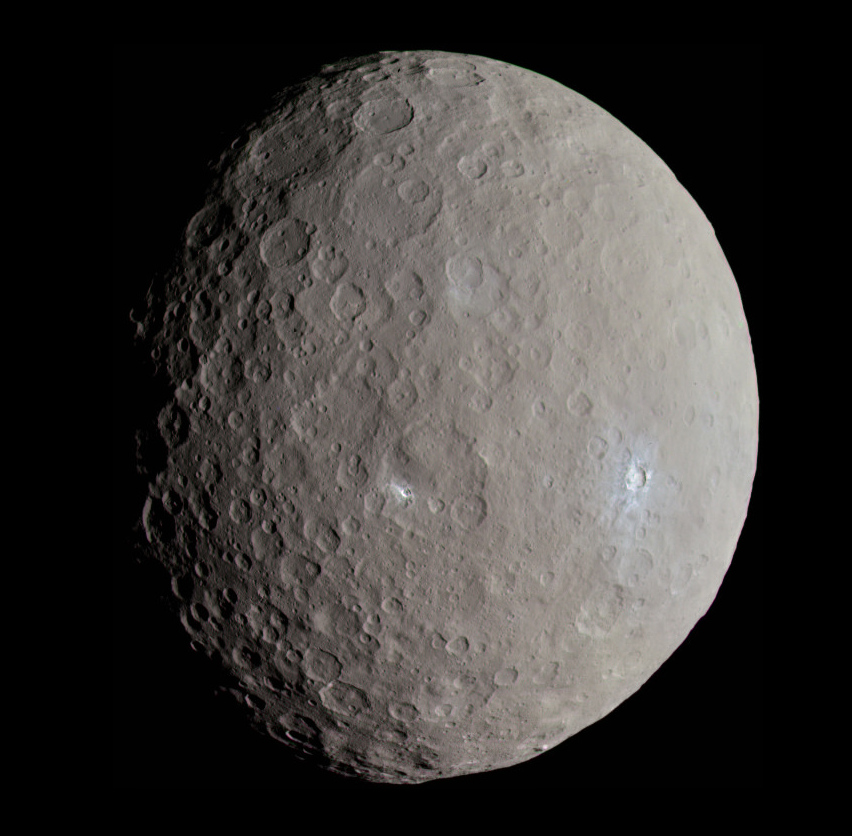

At the same time Ceres will be closest to the Earth (perigee) at a distance of 1.89 AU. At this time it will be the brightest, with an apparent magnitude of 7.3. Look in the constellation of Sagittarius with binoculars or a telescope. The Moon will be a one day old waxing crescent at about 1%, so it won’t be interfering with stargazing during the July 2024 Ceres opposition.
At a mean diameter of 939.4 km Ceres is the largest asteroid and first one discovered in 1801, by Giuseppe Piazzi. Ceres was named after the Roman goddess of agriculture. It is also the nearest dwarf planet and has a surface gravity of just under 3% of Earth’s.
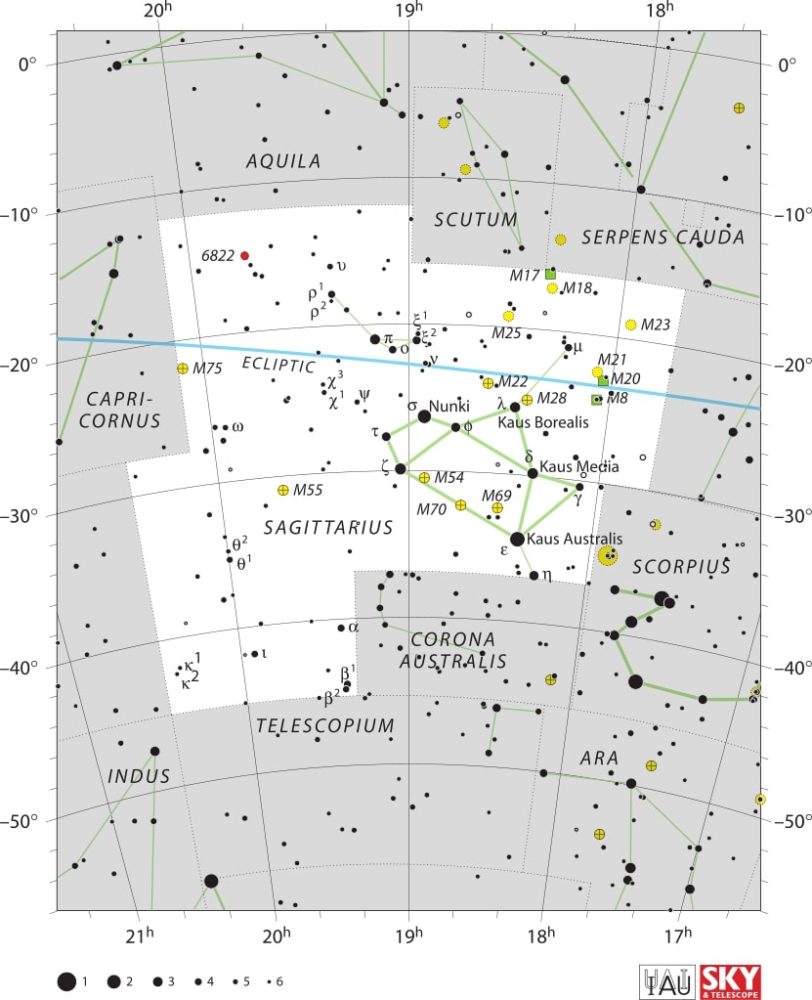

July 7: Conjunction of the Moon and Mercury
The Moon and Mercury will be at conjunction by sharing the same right ascension and passing within 3°13′ of each other.
The two celestial bodies will meet in the constellation of Cancer with an apparent magnitude of -9.0 for the Moon and -0.2 for Mercury. The Moon will be a two days old waxing crescent at 5%.
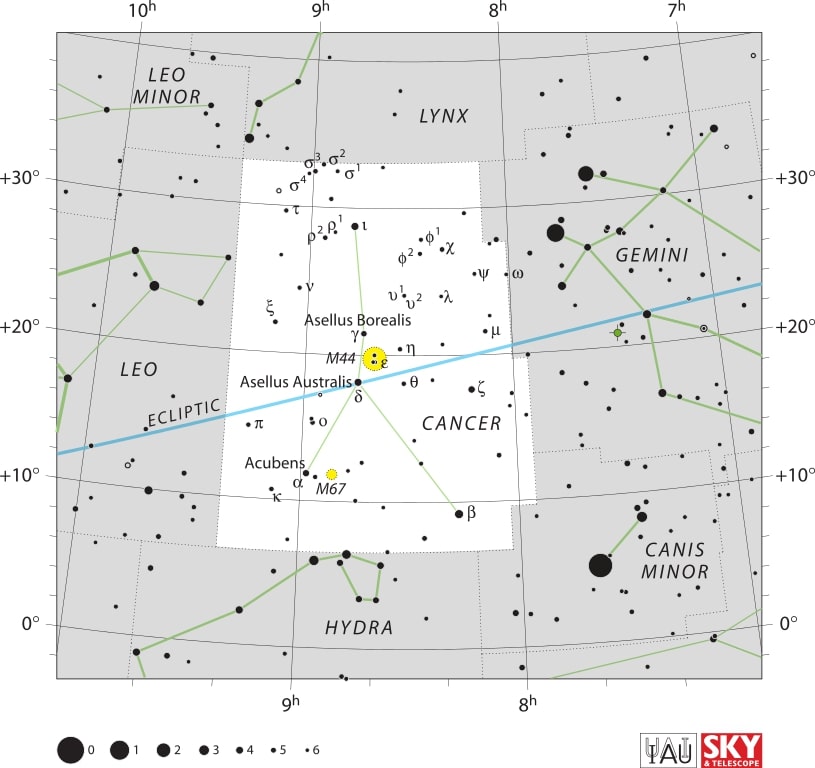

July 10: July Pegasid meteor shower peak
The July Pegasids are a small meteor shower with an average of 3 meteors per hour (ZHR) during the peak if conditions are ideal.
Some meteors may also be spotted between July 4 and 17, enriching your stargazing this summer of 2024. They will radiate from the constellation of Pegasus at the speed of 65 km/s on average.
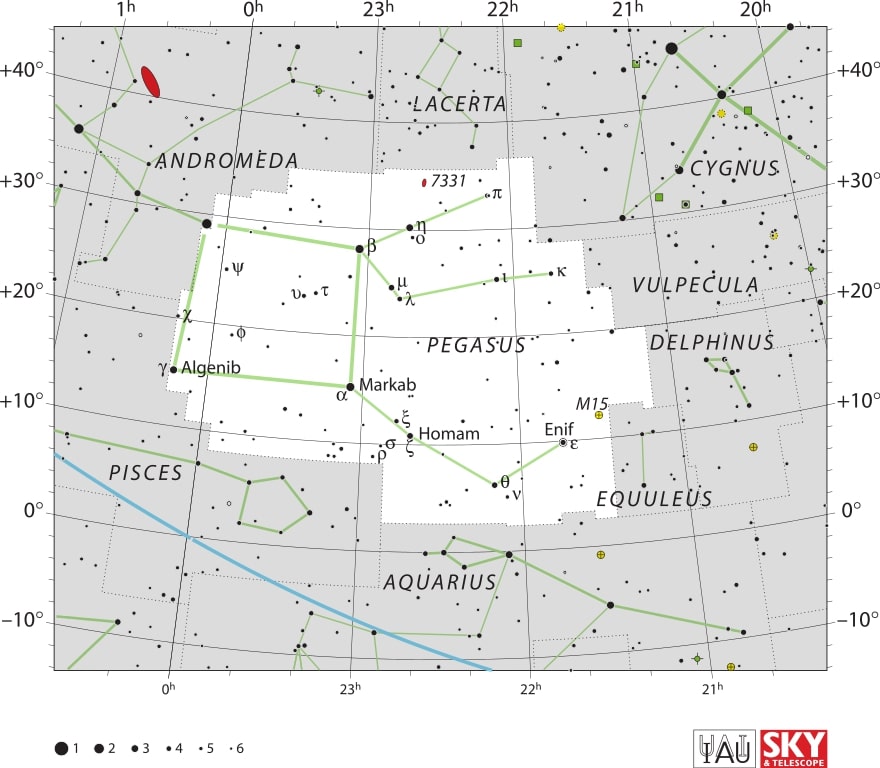

July 15: Conjunction of Mars and Uranus
Mars and Uranus will be at conjunction by sharing the same right ascension and passing within a mere 33′ of each other.
Around the same time, the two planets will also make a close approach (appulse) reaching 32.1 arcminutes from each other, but not sharing the same right ascension.
Look for the two planets in the constellation of Taurus. (Constellation map already displayed above, when discussing the close approach of the Moon and the Pleiades.) Mars will be at apparent magnitude 0.9, while Uranus will be at 5.8. The Moon will be waxing gibbous (68%) at 10 days old.
July 22: Mercury at greatest eastern elongation
Mercury will be at its highest point above the horizon in the morning sky, making it the best time to view the planet. Look for it low in the western sky just before sunrise. It will be at apparent magnitude 0.3 in the constellation of Leo.
The Moon will unfortunately interfere with stargazing for most of the remaining month of July 2024. During Mercury’s greatest eastern elongation it will be 17 days old, waning gibbous at 97%.
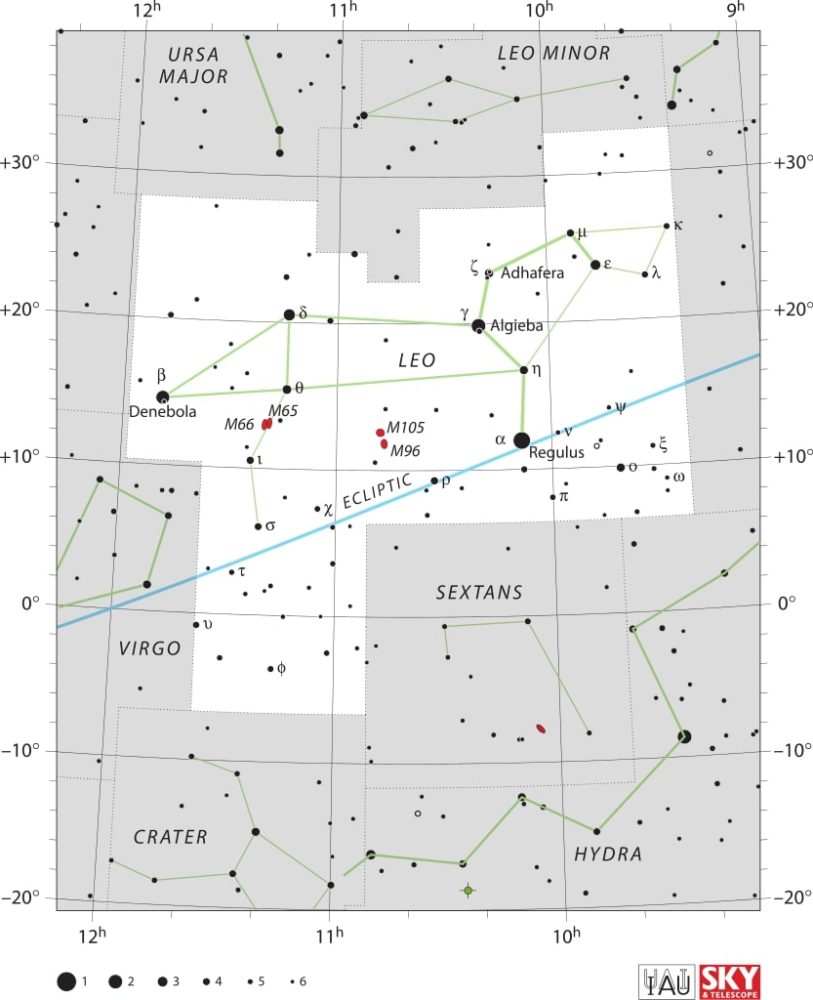

July 23: Dwarf planet Pluto at opposition
The dwarf planet will reach its highest point in the sky at around midnight local time because it will be exactly opposite to the Sun in the sky.
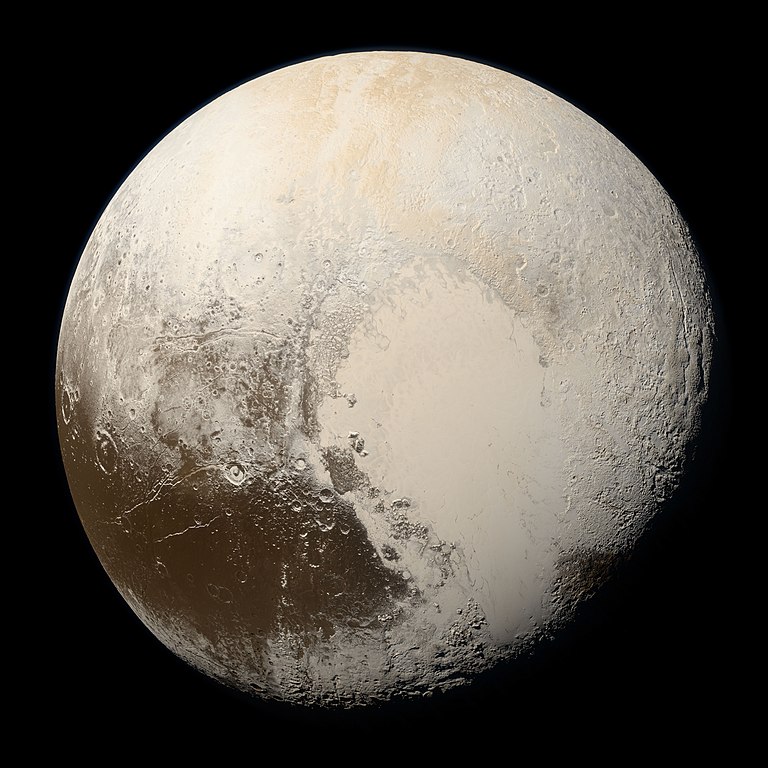

At about the same time, Pluto will also reach perigee, the closest point to the Earth, at 34.05 AU from Earth. It’s at this time that Pluto will be brightest in the sky. Despite this, you will need a telescope to spot this dwarf planet because it will have an apparent magnitude of only 15.0. Look in the constellation of Capricornus. The Moon will unfortunately make it even harder to spot Pluto, as it will be 18 days old, waning gibbous at 90%.


July 24: Conjunction of the Moon and Saturn
The Moon and Saturn will reach conjunction passing within 23′ of each other while sharing the same right ascension.
At around the same time the two bodies will also make a close approach (appulse) reaching 20.8 arcminutes from each other, but not sharing the same right ascension. In some parts of Asia and Africa this distance will be so close as to lead to a lunar occultation of Saturn, meaning the Moon will pass in front of Saturn thereby hiding it from view temporarily. If you’re in northern Somalia, southern and eastern India, Bangladesh, Myanmar, Thailand, Laos, Cambodia, Vietnam, or southern China among others, you’re in luck!
The Moon will be at apparent magnitude -12.5 and Saturn at magnitude 0.7 both in the constellation of Aquarius. The Moon will be 19 days old waning gibbous at 79%.


July 25: Close approach of the Moon and Neptune
The Moon and Neptune will make a close approach (appulse) passing within only 29.9 arcminutes of each other.
In some parts of the world this distance will be so close as to lead to a lunar occultation of Neptune, meaning the Moon will pass in front of Neptune thereby hiding it from view temporarily. If you’re in Papua New Guinea or the Solomon Islands among others, you’re in luck!
Both objects will be in the constellation of Pisces with the Moon being at apparent magnitude -12.4; and Neptune at 7.8. The Moon will be a 20 days old waning gibbous at 72%.


July 28: Piscis Austrinid meteor shower peak
The Piscis Austrinids will peak with a zenithal hourly rate of 5 if stargazing conditions are optimal.
Some meteors may also be spotted between July 15 and August 10. They will radiate from the southern constellation of Piscis Austrinus at the speed of 35 km/s on average.
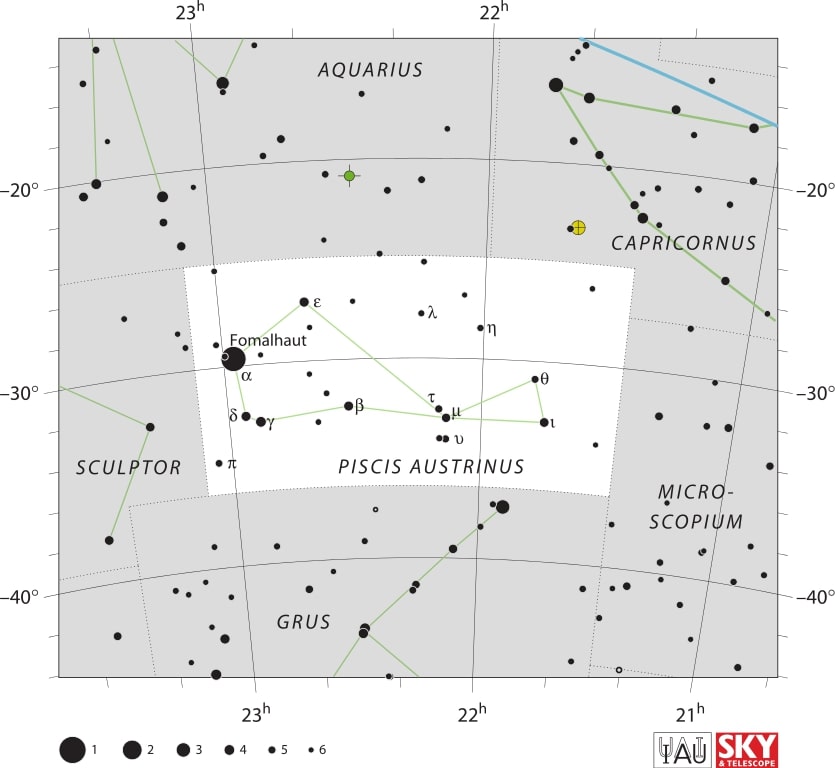

July 29: Close approach of the Moon and the Pleiades
Just like earlier this month, The Moon and the Pleiades will make a close approach for a second time, passing within only 3.9 arcminutes of each other.
Both objects will be in the constellation of Taurus with the Moon being at apparent magnitude -11.4; and the Pleiades at 1.3. (Constellation map already displayed above, when discussing the first close approach of the Moon and the Pleiades.) The Moon will be a 24 days old waning crescent at 25%.
July 30: Southern δ-Aquariid meteor shower peak
The Southern Delta Aquariids will peak this July 2024 with a zenithal hourly rate of 25 if stargazing conditions are ideal. With the Moon a 25 days old waning crescent at 25%, the conditions will be close to ideal, baring unfavorable atmospheric conditions.
Some meteors may also be spotted between July 12 and August 23. They will radiate from the constellation of Aquarius, near one of the constellation’s brightest stars, Delta Aquarii, at the speed of 41 km/s on average. (Constellation map already displayed above, when discussing the conjunction of the Moon and Saturn.) The meteors from this shower originate from comet 96P Machholz.
July 30: α-Capricornid meteor shower peak
The Alpha Capricornids will peak with a zenithal hourly rate of 5 if stargazing conditions are good.
Some meteors may also be spotted between July 3 and August 15. They will radiate from the constellation of Capricornus, at the low speed of 23 km/s on average. (Constellation map already displayed above, when discussing Pluto at opposition.) The meteors originate from comet 169P/NEAT, which was once thought to be an asteroid named 2002 EX12.
July 30: Conjunction of the Moon and Mars
The Moon and Mars will be at conjunction by sharing the same right ascension and passing within 5°01′ of each other.
Around the same time, the two bodies will also make a close approach (appulse) reaching 4°54′ from each other, but not sharing the same right ascension.
Look for the two bodies in the constellation of Taurus. (Constellation map already displayed above, when discussing the close approach of the Moon and the Pleiades.) The Moon will be a very thin waning crescent (20%) at 25 days old, and so will not interfere much with stargazing this last stretch of July 2024. Despite this, the Moon will still be at apparent magnitude of -11.2 , while Mars will be at magnitude 0.9. Jupiter will also be nearby waiting for its own conjunction with the Moon the next day.
July 30: Conjunction of the Moon and Jupiter
The Moon and Jupiter will reach conjunction passing within 5°22′ of each other while sharing the same right ascension.
Around the same time, the two bodies will also make a close approach (appulse) reaching 5°18′ from each other, but not sharing the same right ascension.
The Moon will be at apparent magnitude -10.9 and Jupiter at magnitude -2.1 both in the constellation of Taurus. (Constellation map already displayed above, when discussing the close approach of the Moon and the Pleiades.) The Moon will be a 26 days old waning crescent at 16%.
Moon Phases in July 2024
As you know, the Moon has a big impact on the visibility of celestial bodies and astronomical events in the night sky. So to help you with stargazing, here’s a calendar of the phases of Moon for this month of July 2024:
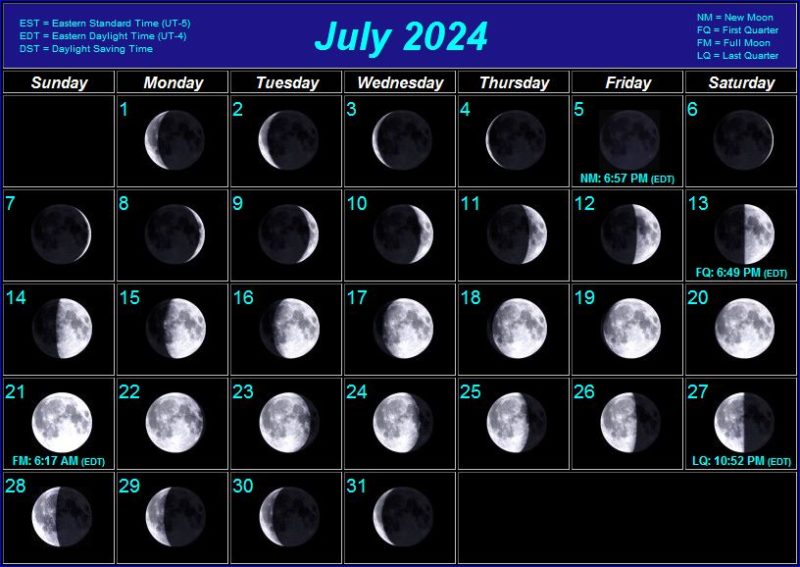

Positions of the Planets in July 2024
- Mercury: The closest planet to the Sun can be seen at dawn and dusk travelling across the constellation of Gemini then Cancer. This planet, being the closest to the Sun, will appear to move quickly in the night sky and its position will change in the following weeks.
- Venus: The sister planet can be seen travelling across the constellation of Gemini. Just like Mercury, Venus can only be seen at dawn and dusk.
- Mars: The red planet can be seen in the constellation of Aries then Taurus.
- Jupiter: The gas giant is visible in the constellation of Taurus. Jupiter can easily be spotted with the naked eye, even in highly illuminated cities.
- Saturn: The ringed giant can be seen with the naked eye in the constellation of Aquarius.
- Uranus: The ice giant can be seen in the constellation of Taurus with the use of a telescope.
- Neptune: The blue giant requires a telescope pointed in the constellation of Pisces in order to be seen.
Positions of Dwarf Planets and Large Asteroids in July 2024
- Ceres: The asteroid belt’s lone dwarf planet can be seen in the constellation of Sagittarius with the help of a telescope.
- Vesta: This large asteroid can be seen in the constellation of Cancer with a telescope.
- Pallas: The asteroid can be observed with a telescope in the constellation of Serpens.
- Hygiea: The fourth largest asteroid can be found with a telescope in the constellation of Pisces.
- Pluto: This distant dwarf planet can be found in the constellation of Capricornus with the help of a large telescope.
Major astronomical events next month – August 2024
- August 6: Asteroid 16 Psyche at opposition.
- August 6: Asteroid 7 Iris at opposition.
- August 8: η-Eridanid meteor shower peak.
- August 12: Perseid meteor shower peak.
- August 17: κ-Cygnid meteor shower peak.
- August 31: Aurigid meteor shower peak.
Conclusion
In short, July 2024 is set to be a remarkable month for stargazing, highlighted by the oppositions of dwarf planets Ceres and Pluto, along with the peaks of several meteor showers, including the July Pegasids, Southern Delta Aquariids, and Alpha Capricornids. These events offer unique opportunities to observe some of the most captivating phenomena in the night sky.
To stay updated on these and other celestial events, and to receive stargazing calendars, be sure to sign up for our newsletter. Happy stargazing!
Sources:
See also: